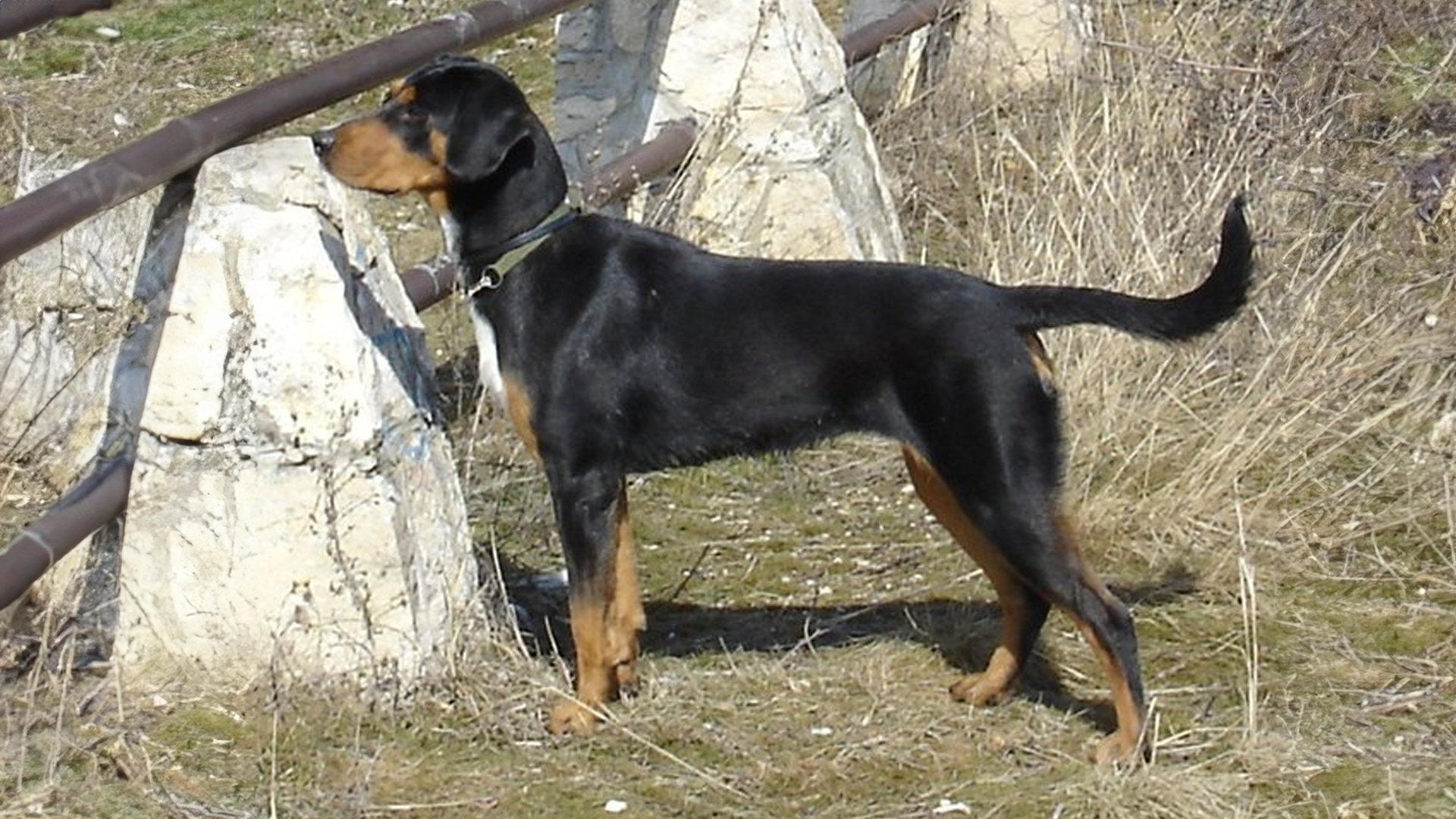Quick search for vets, hospitals or clinics

I thought I would share a little about myself! I am a part of the Foundation Stock Service Group of Dogs. I tend to weigh 55lbs and after I get into the dog food and peanut butter jar I can weigh up to 55lbs. Some people describe me as Brave, Determined or Good-Natured. I'll usually be in your life for around 10 to 14 years so make sure you are ready for a long-term commitment!
Transylvanian Hound
The Transylvanian Hound is a rare medium-sized breed from Hungary, known for its excellent hunting skills, particularly in mountainous terrain. This breed is loyal and friendly, possessing a calm and intelligent demeanor that makes them suitable as both a hunting dog and a family companion. They are resilient and adaptable, thriving in various environments as long as they get enough exercise.
Grooming
Higher ratings mean Transylvanian Hounds need more frequent grooming while lower ratings require less grooming maintenance
Energy
Higher ratings mean Transylvanian Hounds are more energetic while lower levels mean they are more on the calm side
High energy dogs are full of enthusiasm and require a significant amount of physical and mental stimulation to keep them happy and healthy. If you have a high energy dog, you know that simple walks around the block are not enough. Here are some creative ways to tire out your energetic canine companion.
Agility courses are a fantastic way to provide both physical and mental stimulation for high energy dogs. Set up a simple agility course in your backyard using items like tunnels, jumps, and weave poles. Training your dog to navigate the course not only tires them out but also strengthens your bond and improves their obedience skills.
Invest in a variety of interactive toys and puzzles that challenge your dog’s problem-solving abilities. Toys that dispense treats or require manipulation to access rewards can keep your dog engaged and mentally stimulated for extended periods. Rotating toys regularly can maintain their interest.
Enhance the classic game of fetch by adding new elements. Use a ball launcher to increase the distance your dog has to run or play fetch on varied terrain like hills or beaches. Incorporating water play with fetch by throwing toys into shallow water can also add an exciting twist to the game.
Dogs have an incredible sense of smell, and scent work can be a great way to tire them out. Hide treats or toys around your home or yard and encourage your dog to find them using their nose. Enroll in a nose work class to teach your dog advanced scent detection skills, turning this natural talent into a fun and exhausting activity.
Social interactions with other dogs can provide excellent exercise and mental stimulation. Arrange playdates with other high energy dogs or visit local dog parks. Supervised play sessions allow your dog to burn off energy while practicing social skills.
Take advantage of natural trails and parks by going on structured hikes or runs with your dog. The varied terrain and new scents can provide great physical and mental exercise. Ensure your dog is trained to walk or run on a leash and start with shorter distances, gradually increasing as their stamina builds.
High energy dogs often thrive on learning new commands and tricks. Regular training sessions that incorporate obedience drills, new tricks, and even advanced skills like agility or rally obedience can provide mental and physical challenges. Consistent training helps tire out your dog while reinforcing good behavior.
Engage your dog in sports specifically designed for high energy breeds, such as flyball, dock diving, or frisbee. These activities provide intense physical exercise and mental engagement, perfect for exhausting a high energy dog.
Incorporating a variety of physical and mental activities into your high energy dog’s routine can help tire them out and prevent destructive behaviors. With creativity and consistency, you can keep your energetic companion happy and healthy.
Training
Higher ratings mean Transylvanian Hounds are easier to train while lower values mean they might take more time and effort to train
Training a difficult or stubborn dog requires understanding the underlying reasons for their behavior, such as breed traits, lack of socialization, past experiences, or inconsistent training. Establish yourself as a confident and calm pack leader, using high-value rewards and positive reinforcement to encourage desired behaviors. Consistency in commands and regular, short training sessions are key to success. Patience and persistence are essential, breaking training into manageable steps and celebrating small victories. Address specific problem behaviors like barking, chewing, and leash pulling with tailored techniques, and build trust through gentle handling and positive associations. With dedication and a long-term commitment, even the most stubborn dogs can become well-behaved companions.
Steps to Take:
Understand Your Dog’s Behavior:
Establish Leadership:
Use Positive Reinforcement:
Maintain Consistency:
Practice Patience and Persistence:
Address Specific Behaviors:
Build Trust:
No results available
Reset
Finding a Friendly, Local Veterinarian has never been easier. LocalVeterinarians.com makes it simple to find Local Veterinarians, Veterinary Clinics, Doctors, Emergency Vets, Animal Hospitals and Pet Care Health Services. Search by location and see detailed information about each Local Veterinarian, including their services, website link, and contact information.
Click to Ask Anything!